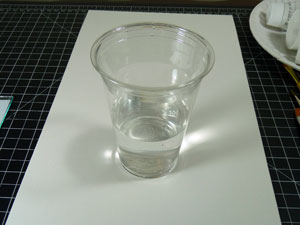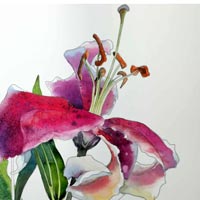In addition to a set of paints (I prefer "Yarka" or "St.Petersburg"), you will need:

brushes
Watercolor brushes have the ability to hold water (and paint) by having a fatter belly and thinner hair.
If you can afford only one brush, buy a #8 round red sable watercolor brush. Otherwise buy the best synthetic or synthetic-blend brush you can find. Adding a round #4 and a 1″ flat would come in handy for detail work and large washes. Most manufacturers have starter sets that contain very usable equivalents.

board and tape
Definitely use it!
Tape the print on all 4 sides to the board. It will not only protect it, but will keep it flat and prevent from warping due to the use of water.

water cup
Change water frequently. No reason to make your painting "muddy".

paper towel
You will need a cloth, a paper towel, or paper wipes. Use them to remove excess water/paint from your brush and for cleaning the brush in between colors.
I usually keep it on a plastic tray or a paper plate as it does get wet - you don't want to ruin your furniture.

palette
Use plastic palettes - they do not absorb water and keep the paint wet.
Dried paint can be reused with some water.
more information will be added later....
















